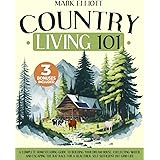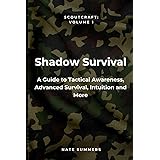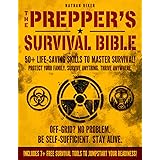When you’re out in the wilderness, far from civilization, a simple headache, muscle strain, or fever can quickly turn a memorable adventure into a miserable ordeal. Modern medicine often feels like a distant luxury, and the idea of finding effective relief might seem impossible. This challenge highlights why understanding natural remedies, like those shared in the video above, is a crucial skill for any survivalist or outdoor enthusiast.
The video introduces us to the incredible power of White Willow Bark for survival pain relief. This ancient remedy offers a potent, natural alternative to common painkillers, making it an invaluable addition to your wilderness medicine arsenal. Let’s delve deeper into this remarkable plant, exploring its history, how it works, and how you can safely and effectively use it when modern options are out of reach.
Understanding White Willow Bark: Nature’s Herbal Aspirin
White Willow Bark, scientifically known as Salix alba, has been revered for centuries across various cultures for its medicinal properties. The bark from this common tree is perhaps one of nature’s most well-known traditional pain relievers. Before the advent of synthetic pharmaceuticals, many ancient civilizations relied on the willow tree for its healing capabilities.
You might wonder how a tree bark can offer such effective pain relief. The secret lies in a special compound called salicin. This chemical is remarkably similar in structure to acetylsalicylic acid, the active ingredient in synthetic aspirin. When you consume White Willow Bark, your body converts salicin into salicylic acid, which then gets to work reducing pain and inflammation.
This natural mechanism provides relief in a way that feels familiar yet is entirely from the plant world. It’s like having a natural pharmacy growing right there in the wild. This makes White Willow Bark an essential plant to identify and understand for true survival preparedness.
Harvesting and Identifying White Willow Bark for Survival
Before you can harness the benefits of White Willow Bark, you need to know how to find and harvest it responsibly. White willow trees typically thrive in moist environments, often found along riverbanks, lakeshores, and in wetlands. They are medium to large deciduous trees, identifiable by their slender, often yellowish-brown branches and narrow, lance-shaped leaves with finely serrated edges.
The bark itself is usually grey-brown, with deep furrows as the tree ages. For medicinal purposes, young branches or saplings are often preferred, as their bark contains a higher concentration of salicin. When harvesting, always practice ethical foraging. Only take what you need, and ensure you don’t damage the tree excessively, especially if it’s a mature specimen.
To collect the bark, use a clean, sharp knife. Carefully peel strips of bark from young, healthy branches, being mindful not to girdle the tree (removing a complete ring of bark), as this can kill it. Once harvested, the bark needs to be dried for storage or used fresh if immediate relief is needed. Proper identification is paramount; always be 100% certain of your plant identification before ingestion to avoid consuming harmful look-alikes.
Preparing Your Herbal Painkiller: White Willow Bark Tea
As the video mentions, the most common way to administer White Willow Bark for survival pain relief is by making a tea. This method allows the salicin to be extracted effectively, creating a potent medicinal brew. Preparing the tea is relatively straightforward, even in a wilderness setting.
Steps for Making White Willow Bark Tea:
- Gather Your Bark: Use fresh or dried White Willow Bark. If fresh, you might need a bit more to achieve the same potency as dried bark.
- Chop or Grind: Break the bark into smaller pieces. The more surface area exposed, the better the extraction.
- Boil Water: Bring about 1-2 cups of water to a boil in a pot or heat-safe container.
- Steep the Bark: Add 1-2 teaspoons of chopped bark per cup of boiling water. Reduce the heat and let it simmer for 10-15 minutes, or even longer for a stronger decoction. The longer it simmers, the more active compounds are extracted.
- Strain and Serve: Strain the bark pieces out of the liquid. The resulting liquid is your herbal pain relief tea.
It’s important to note that the potency can vary based on the bark’s age and the preparation method. Starting with a smaller dose and observing your body’s reaction is always a sensible approach, especially when experimenting with natural remedies in a survival situation.
Navigating the Bitter Taste of White Willow Bark Tea
The video correctly points out that White Willow Bark tea has a very bitter taste. This can be a significant hurdle for some people, making it unpalatable when you’re already feeling unwell. However, in a survival scenario, comfort sometimes takes a backseat to necessity.
If you have access to them, there are ways to make the tea more tolerable. Adding natural sweeteners like wild berries (if identified safely), maple syrup, or honey (if you’re lucky enough to find some) can help. Even a squeeze of lemon juice or a few mint leaves can mask the bitterness. Without these luxuries, remember that the temporary unpleasant taste is a small price to pay for effective survival pain relief when you truly need it.
Another approach to consider, if you have access to grinding tools, is creating a powder from dried bark. This powder can be encapsulated or mixed with a small amount of water to be swallowed quickly, bypassing the taste buds almost entirely. This method might be more practical for pre-prepared survival kits.
Beyond Pain Relief: Fever Reduction and Anti-Inflammatory Benefits
While the focus is often on its pain-relieving qualities, White Willow Bark is a versatile natural remedy. Its salicin content also makes it a powerful fever reducer. When fighting off an infection or suffering from heat exhaustion in the wild, bringing down a fever can be critical to recovery and overall well-being. The mechanism is similar to how it tackles pain, by influencing the body’s inflammatory pathways.
Furthermore, White Willow Bark exhibits significant anti-inflammatory properties. Inflammation is the body’s natural response to injury or infection, but excessive or chronic inflammation can cause pain and hinder healing. By reducing inflammation, White Willow Bark can help alleviate discomfort from sprains, strains, arthritis-like symptoms, and other physical injuries encountered during outdoor activities. This broader spectrum of benefits makes White Willow Bark an even more valuable asset for wilderness medicine.
Important Considerations and Precautions for Using White Willow Bark
Even though White Willow Bark is a natural remedy, it’s crucial to approach its use with respect and caution. It contains compounds similar to aspirin, so many of the same precautions apply. For example, individuals with aspirin allergies should absolutely avoid White Willow Bark. It’s also not recommended for children and teenagers, particularly those recovering from viral infections, due to the risk of Reye’s Syndrome – a rare but serious condition.
Pregnant or breastfeeding women should also exercise extreme caution and avoid its use, as should individuals on blood-thinning medications or those with bleeding disorders. The active compounds in White Willow Bark can thin the blood, increasing the risk of bleeding. Always start with a lower dose to assess your body’s reaction, especially in a survival scenario where medical attention is unavailable.
Remember, knowledge of White Willow Bark is a tool, not a cure-all. It’s for temporary relief of minor to moderate pain and fever. Severe injuries, persistent high fevers, or other serious medical conditions require professional medical attention, which you should seek as soon as possible after any survival situation.
Embracing Wilderness Medicine Skills for Preparedness
Understanding and being able to utilize natural remedies like White Willow Bark reinforces the core principle of survival: self-reliance. As the video emphasizes, becoming your own medic by knowing how to handle basic medical emergencies is an important part of survival preparedness. This isn’t about replacing modern healthcare, but rather about having effective stop-gap solutions when conventional options are simply not available.
The ability to identify, harvest, and prepare White Willow Bark for survival pain relief empowers you to take control of your well-being in challenging environments. It turns the natural world into a resource for health, rather than just a place to endure. Incorporating such practical skills into your outdoor repertoire can provide immense peace of mind. Prepare wisely and learn continuously to ensure you’re ready for whatever the wilderness may present.











